
Punctuation Marks and Beyond: The Ultimate Guide to English Punctuation
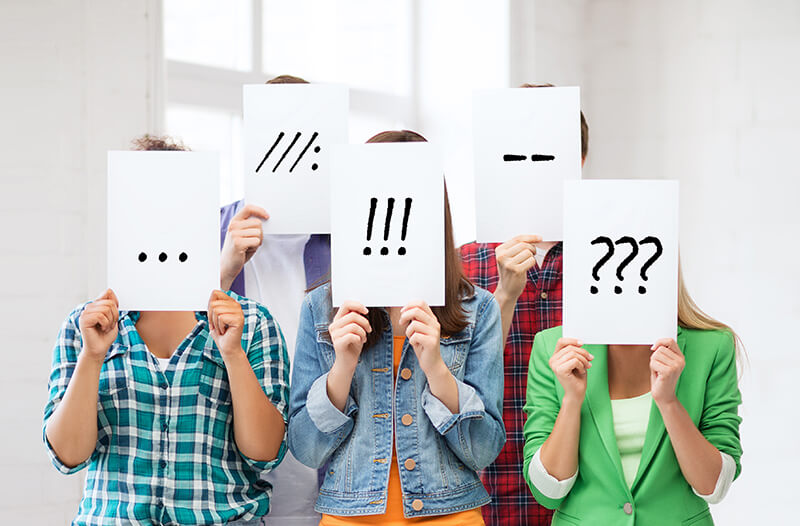 Punctuation marks are one of the most important parts of English grammar and communication. In fact, one misplaced punctuation mark can change the entire meaning of what you’re trying to say.
Punctuation marks are one of the most important parts of English grammar and communication. In fact, one misplaced punctuation mark can change the entire meaning of what you’re trying to say.
Learning to perfect your grammar is a skill that sometimes even the most fluent speakers can mix up. There are so many rules, and so many symbols that are used for a variety of different things. But it’s important to know them and use them properly – there’s a reason that your professors include an entire section on grammar in your marking rubric, and it’s not just to find excuses to deduct marks.
If you’re struggling with grammar, and specifically with punctuation, you’re definitely not alone. Whether you’re an ESL student or just brushing up on your grammar, this guide to punctuation marks in the English language will help you make sure you always convey the right message.
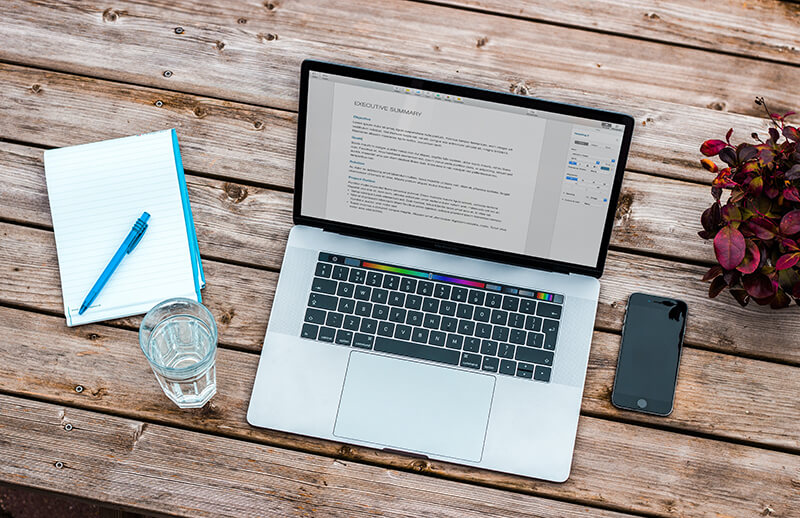
The Importance of Punctuation Marks
So, why exactly are punctuation marks so important? Well, it’s all about communication. The right punctuation can make a major difference in the tone, message, and information you need to convey.
Here’s a classic example most people use when talking about the importance of punctuation. Look at these two sentences:
Let’s eat grandpa.
Let’s eat, grandpa.
Clearly, these two sentences can mean completely different things with the absence of one little piece of punctuation. The first sentence sounds like you’re going to eat your grandfather, while the second indicates you’re clearly inviting him to dine with you (not as the main course).
If no one ever used punctuation we would get sentences like this that make no sense because they go on forever and don’t really tell you where you need to separate information normally when we use punctuation we want to make sure people get the right idea about what we’re saying if you don’t use the right indicators you could easily send someone the wrong message or they could misinterpret what you’re trying to say that’s the best way to mislead someone.
Did you have a hard time reading that paragraph above, or run out of breath in your head? That’s because there was no punctuation in it. The correct paragraph should look like this:
If no one ever used punctuation, we would get sentences like this that make no sense because they go on forever and don’t really tell you where you need to separate information. Normally, when we use punctuation we want to make sure people get the right idea about what we’re saying. If you don’t use the right indicators, you could easily send someone the wrong message or they could misinterpret what you’re trying to say. That’s the best way to mislead someone!
In fact, there are entire articles dedicated to showcasing how funny it is when people don’t use the right punctuation. Don’t end up on a Buzzfeed list – learn the right punctuation.
Before you study the different punctuation indicators we’re going to teach you about in this article, it might be a good idea to brush up on the different types of sentences in the English language. We’re going to be name-dropping some of these sentence types and clauses below, and you’ll understand better if you give yourself a bit of a fresh perspective.
How Many Punctuation Marks Are There in the English Language?
There are approximately 14 punctuation marks commonly used in the English language. We’ll go over them in detail below, but here is the list:
● Period
● Comma
● Quotation mark
● Apostrophe
● Question Mark
● Exclamation Point
● Colon
● Semicolon
● Hyphen
● Dash
● Brackets/parentheses
● Braces
● Ellipses
● Asterisks
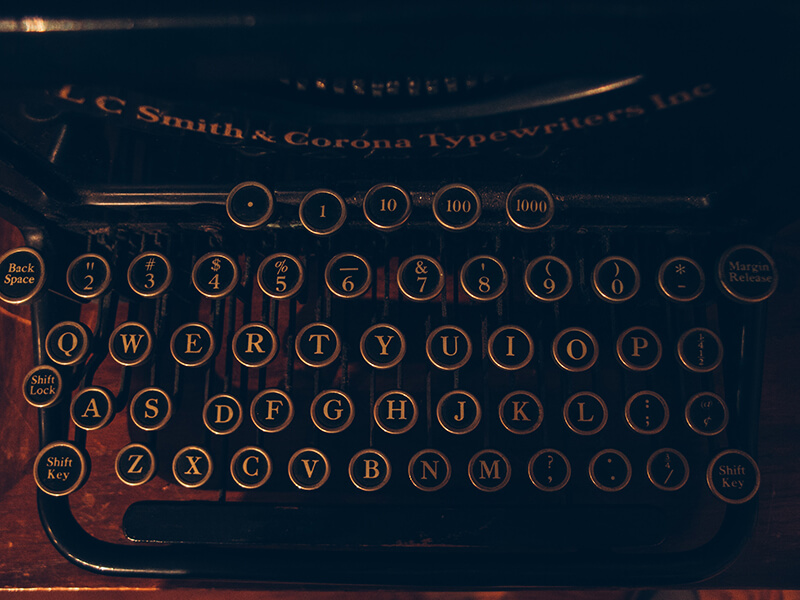
Periods (.)
The period is basically the king of all punctuation marks in English. It’s used to represent a full stop at the end of your sentences, but there are also tons of other ways we use this little mark.
There are multiple ways to use a period, and we’ll go over all of them here. To summarize them, however, periods are used in the following ways:
● At the end of declarative sentences
● To state indirect questions
● Abbreviations for proper nouns (official names of people and places)
● To abbreviate someone’s title
● Within acronyms for organizations and companies
● To write dates and times
● Abbreviations for addresses
Full Stop: Using Periods to End Sentences
As we stated above, periods are primarily used to represent a full stop in writing. You typically put a period at the end of a declarative sentence, which is a sentence that makes a statement, or when writing indirect questions.
Indirect questions can be confusing. An indirect question is a sentence where you describe asking someone something but it’s not directly addressed to the person you asked the question to. Here’s an example: I asked Mike if he knew where Molly went. Many people often incorrectly put question marks at the end of these types of sentences (we’ll go over those below), but it should be a period because you are not directly asking a question to someone.
Here are some examples of periods used to indicate the end of a declarative sentence or indirect question:
● I brushed my teeth before I left the house this morning.
● We had a great time at Mike’s birthday party last weekend.
● He admitted how he felt, and I didn’t know what to think.
● Mom asked me to tell you to pick up orange juice on your way home.
● Joey asked Susan if she would go out with him on Friday night.
● My mom always told me never to leave the house without brushing my teeth first.
Periods For Abbreviations
Periods are also used for abbreviations in names and proper nouns, dates, times, and addresses. An abbreviation is a way of shortening a common word. With proper nouns, you use a period to shorten someone’s title. This could be someone’s degree, like a doctor, or it could be someone’s initial. If you need to talk about multiple people, you can use an “s” before the abbreviation period, like this: Drs. Collins and Smith. Periods are also used to abbreviate some locations, such as the U.S.A.
Abbreviations for organization titles can get a little tricky, too. Typically, a good rule of thumb is if you pronounce the organization name like its own word instead of as individual letters, you don’t need a period. For example, you don’t use periods when talking about NASA because that word is pronounced as its own word, but you’d use it for Washington, D.C. because we pronounce D.C. by its specific letters.
Many people tend to write dates and times a little differently, but the standard is periods after each letter if you use lowercase letters. For example, you would write 8 o’clock like this: 8:00 p.m. We wouldn’t typically shorten the name of a day of the week or a month in the middle of an academic essay, but when you do need to shorten it in a quick note or casual letter, you’d use a period. For example, Monday, February 25 would look like this: Mon. Feb. 25.
Here are some examples of how periods are used for abbreviations:
● Mrs. Robinson made us an amazing lunch before we headed home from our road trip.
● Please address my package to 44 King St. W., Toronto, Ontario.
● I have made an appointment with Dr. Mike Smith for Friday morning.
● The Roman Empire began in 27 B.C.E.
● Dr. Martin Luther King, Jr. was a leader in the Civil Rights Movement.
● Jill Biden, Ed.D., is the current First Lady of the United States.
● He wakes up every morning at 6:30 a.m. to watch the sun rise.
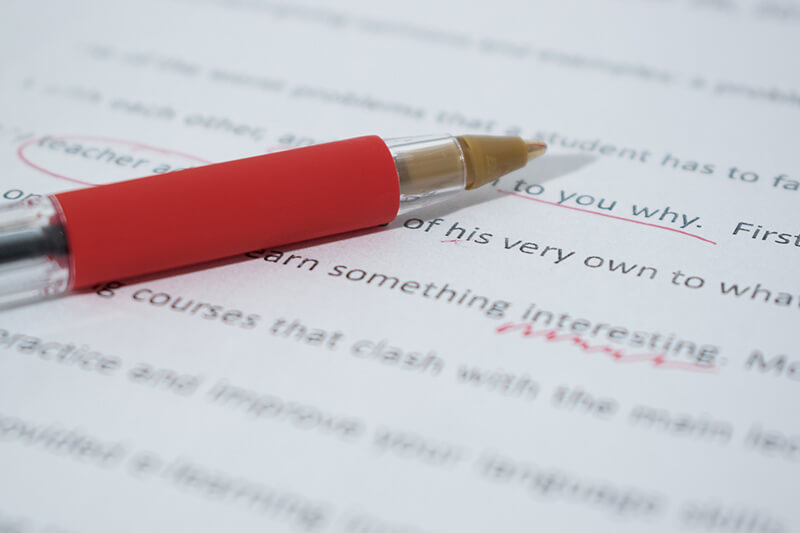
Commas (,)
Like periods, commas have many different uses and can be very tricky to grasp as an ESL student. Even native speakers who have spoken English their entire life often have difficulty with things like avoiding comma splices within compound sentences.
A comma represents a short pause. It’s not an end pause like a period, but just a quick break between words. This concept can cause difficulty for people because many people tend to think they need to add a comma every time there’s a short break in a sentence. However, this is not true and leads to excessive comma use.
Commas are used for the following purposes:
● Between coordinate adjectives
● In compound sentences to separate two or more independent clauses
● When complex sentences begin with a dependent clause
● In a series or a list
● To include absolute phrases
● After a transition word
● With quotation marks in dialogue
● After short interjections
When writing dates and times, commas are also often used for clarity. For example, if you were writing out your birthday in a sentence, you’d write: I was born on Monday, July 30, 1990.
Coordinate and Cumulative adjectives and Commas
Commas are used between coordinate adjectives when describing something. Coordinate adjectives are adjectives that can be used to describe something, such as someone’s appearance, but that don’t build on one another. Cumulative adjectives are the opposite, and build on one another to create a description. You don’t use a comma with cumulative adjectives, but you do with coordinate ones.
For example, here is a sentence using coordinate adjectives: The large, menacing dog stared back at me from behind the fence.
Meanwhile, here is a sentence using cumulative adjectives: Only two weak fence posts separated the dog from where I stood.
There are two ways to figure out if you need to use a comma between your adjectives, or whether they are coordinate or cumulative. The first way is to see if it makes sense if you add the word “and” between the two. If we use the examples above, you’d get this:
The large and menacing dog stared back at me from behind the fence.
Only two and weak fence posts separated the dog from where I stood.
As you can see, the first sentence still makes sense with “and” between the adjectives, so they are coordinate adjectives and you can use a comma. However, the second one doesn’t, so they are cumulative adjectives.
The second way is to see how the words sound if you switch them around. Going back to the example above, here’s how the two sentences would sound:
The menacing, large dog stared back at me from behind the fence.
Only weak two fence posts separated the dog from where I stood.
Again, the first sentence still makes sense when the words are swapped, so it’s a set of coordinate adjectives. However, the second sentence doesn’t make sense at all, so they are cumulative adjectives.
Commas in Compound and Complex Sentences
In compound sentences, commas are used to separate two or more independent clauses (full sentences that include a subject and predicate and could stand on their own if separated). Usually you’ll see a conjunction such as “but,” “and,” or “so” to connect the two, and it typically comes after the comma.
This is where things get tricky. Using commas with compound sentences is a common way people end up with comma splices. A comma splice is an incorrect use of grammar where the comma is used to separate two independent clauses without a conjunction between them.
Here’s an example: I did complete my essay, I haven’t submitted it yet.
This sentence uses a comma splice because it connects two independent clauses without a conjunction – in this case, the conjunction is “but.” The correct way to write this is like this: I did complete my essay, but I haven’t submitted it yet.
The rule of thumb here is to determine if each half of the sentence makes sense on its own if you separate them. To do this, just replace the conjunction with a period. If they do make sense on their own, you can use a conjunction and comma to join them. When they don’t make sense separately, you don’t need a comma and can just join both incomplete sentences.
Using the example above, if you took out the conjunction “but” and replaced it with a period, both sentences would still make sense: I did complete my essay. I haven’t submitted it yet. However, the comma and conjunction provide more context and connect these two related phrases together.
Here are some more examples of commas in compound sentences:
● After dinner we rode our bikes out to the beach, and we went swimming until it got dark.
● I asked Mary to go to the new Avengers movie with me, but she doesn’t like superhero movies.
● The elephant is a large animal, but it usually has a friendly demeanor.
● I completed my history homework first, and then I started on my English lessons.
● He really likes macaroni, but he doesn’t like cheese.
● Mark just graduated from high school, so he will be attending college in the fall.
In complex sentences, commas are used when the sentence begins with a dependent clause (a sentence fragment that does not include a subject and predicate, and therefore can’t stand on its own as a full sentence). If the sentence begins with an independent clause, you don’t need the comma.
Here are some examples of commas in complex sentences:
● If you’ve found the page, please continue reading from there.
● Unlike my mother, my father loves watching scary movies.
● On page 35 of the textbook, we will learn about biological testing.
● Despite knowing the rules, Jenna still didn’t realize what she was doing was wrong.
Commas For a Series or List
When commas are used in a series or list, they are used in place of a conjunction (usually “and”) to connect things that relate to one another. For example, instead of saying “I ordered pizza and Coca Cola and a side of fries,” you would write, “I ordered pizza, Coca Cola, and a side of fries.”
Using commas in a list is relatively straightforward, but the factor that people tend to confuse is whether or not to use the Oxford comma. Also known as a serial comma, this is a comma that’s included at the end of a series before the end conjunction. There is no standard rule requiring the use of the Oxford comma, so it typically comes down to the writer’s preference or if it’s outlined in a certain style guide.
Here are some examples of commas used in a series or list:
● The following meals are available on our menu: burgers and fries, poutines, milkshakes, and salads.
● For your exam, please bring a pencil, an eraser, and a ruler.
● I’m usually in class on Mondays, Wednesdays, and Fridays.
● With focus, motivation, and dedication, you will be able to ace this test.
● For the party on Saturday I need Jessica to bring the chips, Chris to bring the sodas, and Jenna to bring the music.
● I don’t care where you go, what you do, or who you see as long as you aren’t breaking the law.
Other Comma Uses: Absolute Phrases, Transition Words, Quotations, and Interjections
An absolute phrase is an incomplete sentence fragment usually made up of a noun or pronoun that functions like an adjective to describe something. It’s different from a typical adjective because it usually adds more depth or meaning to the sentence. When an absolute phrase is used in a sentence, it’s separated by commas.
Here are some examples of commas used with absolute phrases:
● My sister, who was never a fan of car rides, objected to an impromptu road trip.
● The tower, which stuck out like a sore thumb, stood 30 stories above the rest of the skyline.
● Mike’s car, which he lends to his sister, is never clean enough for passengers.
● The giraffe’s neck, which can reach up to 6 feet in height, weighs up to 600 pounds.
Commas also go after transition words when the transition words are used at the beginning of a sentence. Here are some examples of this:
● Therefore, the solution to your problem is to make more applications.
● However, with these results we see that there are some discrepancies.
● We got a snowfall last night. As a result, my dog won’t go outside right now.
● Unfortunately, we won’t be able to get you an appointment until next week.
To learn more about transition words and how to use them, check out our master list of 200 transition words for essays.
Commas are also used with quotation marks to write dialogue or in a direct quote from a source in an essay. Typically, a comma will come before a quotation mark when starting the dialogue, as well as when the dialogue is split up within the sentence.
Here are some examples of commas used with quotations or dialogue:
● Mary said, “I am not going in that terrifying building.”
● “What we have here,” Dr. Martin said, “Is a classic case of the summertime blues.”
● “Tell mom I’ll be home later,” said my brother, “But I’ll call when I’m leaving.”
● My mom asked, “Did you get the note I left on the fridge?”
● In his famous speech, Hamlet says, “To be or not to be—that is the question” (Hamlet, 3.1.57).
● Upon arriving in North America, Christopher Columbus described the Native Americans by stating that, “They would make fine servants” (From Christopher Columbus’ journal).
Lastly, commas can be used before short interjections that come at the beginning of a sentence, as well as to address someone directly or issue a command. Here are some examples:
● Yes, I have a pen in my pocket you can use.
● Mark, did you pick up your clothes from the dry cleaner yet?
● Thank you, Mike. We appreciate your donation.
● No, I don’t see the answers in the book.

Quotation Marks (“”)
Quotation marks are a little more simple than commas and periods, and typically have three uses: to indicate dialogue (when someone is speaking), to quote sources or lines from a text, or to indicate titles of certain things.
The quotation marks go at the beginning and the end of the phrase, whether it’s the quotation of someone speaking or the line from the text you’re pulling. Typically, they’re accompanied by commas and other forms of punctuation. We’ll talk more about using different types of punctuation together later in this article. For now, here are some examples of the various uses for quotation marks:
● “The Simpsons” is one of the longest running series on television.
● When I asked her what she wanted to do for dinner, Mary said, “Let’s go out to eat tonight.”
● “Go wash up before dinner,” my mom said as I arrived in the kitchen.
● In a Works Cited Page: Smith, Jordan. “The Curious Case of Cats.” The New York Times, vol. 26, no. 2, 2004, pp. 5-9.
● In her article on animal testing, Dr. Smith states that, “the synthetic alternatives available today are better than ever” (Smith 33).
In more casual language or conversation, quotation marks are used to indicate something is sarcastic, not actually real, or meant to mean something else. This is another concept that can get tricky. For example, let’s say you lie to your parents and tell them you’re going to the library to study but you’re actually going to your friend’s house to play video games. If another friend texts you and asks you what you’re up to, you might say you’re “studying.” This indicates that what you’re actually doing doesn’t match up to what you’re saying you’re doing.
Apostrophes (‘)
Typically, we use apostrophes for three things: to show possession, to shorten years, and in contractions.
In contractions, apostrophes are used where the two words are shortened and joined together. They go in place of the letters that are removed. For example, “do not” becomes “don’t” and “have not” becomes “haven’t.” Contractions aren’t used in formal writing and are usually designated for casual use.
For possession, apostrophes are placed between the noun or pronoun and the letter “s.” For example, if Mary owns a car, you would say, “Mary’s car.” When you’re indicating possession and the word already ends in the letter “s,” you don’t add another “s.” Instead, you just add the apostrophe to the end of the word. So, if you wanted to say that Chris owns a car, you’d say, “Chris’ car.”
Where things get tricky with apostrophes is when they’re used for possession. It’s very common to see even native English speakers add apostrophes to plural words when they really don’t belong there. For example, many people will write “The Smith’s” instead of “The Smiths” to talk about a family with the last name Smith. This is not correct, unless you’re describing an item the family owns, in which case you’d say, “That’s the Smiths’ car.” People often confuse this when discussing days of the week in plurals. For example, you might see someone say, “I hate Monday’s.” However, it should actually read like this: “I hate Mondays.”
When you use an apostrophe to shorten years, such as when you refer to a decade, you would add the apostrophe when you remove the first two numbers. So, if you’re talking about the 1970s, you would shorten it to the ‘70s.
Here are some examples of apostrophes in use (you will also see them used throughout this blog):
● I can’t believe they cancelled my favourite television show.
● Sometimes I wish I was a teenager in the ‘60s so I could have gone to Woodstock.
● Is the Williams’ house for sale?
● My mom’s car wouldn’t start this morning, so we had to walk to school.
● On Fridays, my teacher’s kid visits our class before daycare.
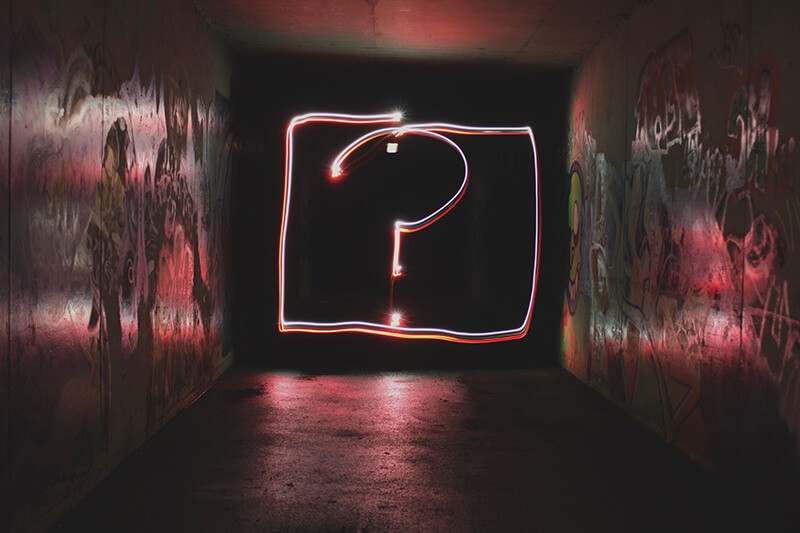
Question Marks (?)
As the name suggests, question marks are used to ask questions. They are used at the end of interrogative sentences (also known as direct questions) as well as question fragments. A question fragment is simply a shorter incomplete sentence used in casual language as a quick question. For example, “Why?” is a question fragment but it’s commonly used in conversation.
Here are some examples of question marks:
● Mary, did you finish your homework yet?
● Where did you put my glasses?
● What schools are you applying to next year?
● I didn’t do my homework last night. Did you?
● You broke your curfew last night. Why?
● What toppings would you like on your pizza?
Exclamation Points (!)
An exclamation point is used to convey an expression of excitement or a stronger emotion than a simple period would. They are used at the end of exclamatory sentences. You don’t really come across exclamation points too often in formal writing like academic essays or business documents unless something is being quoted from a source.
Here are some examples of exclamation points in use:
● I’m so happy you’re coming to visit soon!
● Wow! I didn’t realize there were so many ice cream flavours here.
● I won my hockey game last night!
● Don’t go over there!
● I can’t believe you said that to your mom!

Colons (:)
Colons, which look like two stacked periods (:), are used after independent clauses to connect sentences. It usually gives the silent impression of “as follows,” “which is/are,” or “thus.” You use a colon when the first part of the sentence is an independent clause, but the part after the colon can be either dependent or independent. However, the first part before the colon is always an independent clause that can stand on its own as a sentence.
Usually, you’d use a colon for the following reasons: to start a list, when you state a definition, when you need to explain something, when you’re adding extra details, or when you need to highlight something in a sentence. In some of these situations, you can use a colon in place of a comma if you want to add extra emphasis to your sentence, but make sure that an independent clause always comes first.
Here are some examples of the proper uses of colons:
● There are four countries at the top of my bucket list: France, England, Spain, and Greece.
● A dolphin is not a fish: it’s a warm-blooded mammal.
● There are four things you need to bring tomorrow: your textbook, a signed permission slip, a pencil, and an eraser.
● All of Jesus’ apostles were loyal to him except for one: Judas.
● You have two options for the road trip tomorrow: ride in the car with mom or stay home.
There are some other uses for colons as well that you might come across. These include:
● After the greeting in a letter or email – Dear Mr. Smith: I would like to apply…
● In scripts to indicate dialogue. (JOE: How are you doing? MIKE: Great, and how are you?)
● Between hours and minutes in time – 5:00 p.m.
● Between titles subtitles in movies and television shows – Star Trek: The Next Generation
● Between city and publisher in bibliography entries in essays, articles, and papers – New York, NY: Bantam Books
● On warning signs – Caution: Slippery When Wet
● To indicate “to” and “from” in letters and emails – To: Mr. Smith, From: Joey
● Between chapters in Bible references – John 3:16
Semicolons (;)
Semicolons look like a period stacked on top of a comma, like this ;. They are often confused with colons because they are used in the same way, but have slightly different connotations.
While a colon is used after an independent clause and before either an independent or dependent clause, a semicolon is always used between two independent clauses. It’s usually used to join the two independent clauses together in one sentence and signal a break. You would use it in place of a conjunction (such as “and” or “so”).
You can also use a semicolon in a list when the individual items in the list include commas. This helps you break up the sentences and make them easier to read, distinguishing between the listed items. It’s most common to see this with locations such as cities.
Here are some examples of semicolons in use:
● My friend just had a baby; I hope to visit her soon.
● You can come and pick me up now; I’m feeling much better.
● My favourite cities to visit are Toronto, Ontario; Vancouver, British Columbia; Halifax, Nova Scotia; and Regina, Saskatchewan.
● I just got home from work; give me a few minutes to relax first.

Hyphens and Dashes (- and –)
Hyphens and dashes are another set of punctuation marks that are often either mixed up, confused, or used interchangeably.
We use hyphens for a few different purposes:
● To connect words: get-together, self-employed, ex-boyfriend, free-for-all
● For descriptive adjectives that appear before the noun: five-year-old daughter, shell-like appearance, vanilla-flavoured ice cream
● To write out numbers in words (21 to 99): twenty-three, fifty-nine, sixty-two
● In fractions: two-thirds, three-quarters
● For scores of games: They lost 26-4.
● When using numbers or single capital letters as prefixes: X-ray
Meanwhile, dashes are a little longer in length than hyphens and are used to signal a pause or a break. Unlike hyphens, though, a dash goes between groups of words instead of in the middle of a word.
There are two main types of dashes: the en dash (–) and the em dash (—). An en dash is used between numbers to indicate a range (24–56). An em dash is used in the same way you’d use a colon, to highlight something or set some text apart, but it adds a bit of extra emphasis.
Here are some examples of both types of dashes in use:
● For homework, the teacher told us to read chapters 2–4.
● My mom was always afraid of one thing—giant spiders.
● Our soccer team lost the game 4–3 last night.
● You only need to know one thing to qualify for the team—when it’s the right time to pass the puck.
Brackets, Braces, and Parentheses ([ ], (), and { })
You can see in this very article that parentheses are used in each title. They look like this: ().
Parentheses enclose information and separate it from the main idea of the sentence or paragraph, like a side note or for clarification. They should be used only when necessary. In formal writing, parentheses are most often used to cite sources. If you feel the need to use them otherwise, try to rewrite the sentence instead.
Two other ways we use parentheses are for area codes in phone numbers and when we use time zones in dates and times. For example, you’d list a North American phone number as (555) 555-5555, and a time zone as 5:00 p.m. (PST).
Brackets are essentially square parentheses and look like this: []. They aren’t seen as often as parentheses and are usually only used within a direct quote that’s either missing information or when something has been added to the direct quote. This lets the reader know something was added to that quote and that it wasn’t the original author’s words.
Here are some examples of brackets and parentheses in use:
● In her article, Janice Smith states that the current standards for regulation are incomplete and outdated (Smith 1991).
● We ordered assorted subs for dinner (my favourite kind).
● The newspaper reported, “The enemies were captured, and [they] were imprisoned.”
● Joey got an A (the only one in the class) on the English literature exam.
● The Hundred Years’ War (1337-1453) actually lasted longer than one hundred years.
Braces look like curvy brackets ({}) and are much less common in writing. They are primarily used in mathematical equations or in sheet music. You won’t really need to worry about these if you aren’t taking a math or engineering program or when writing a formal academic essay.
Ellipses (…)
The ellipses is a set of three periods used in a row, like this:…
In casual language, the ellipses is a set of punctuation that is often misunderstood. It’s used to indicate when a thought trails off, or when someone is stammering something in dialogue. You may see this symbol very often on social media or in text messages, where it is frequently overused (and usually not correctly).
Ellipses aren’t really used very often in formal writing, except to fill in the blanks when shortening quoted sources. You can use them when quoting someone if you don’t want to use their full quote, but the parts you do want to use are in the beginning and the end.
When writing it out, usually a space is added after the ellipses unless you’re using them before a quotation mark. If you use them with a quotation mark, you don’t include a space. In some specific style guides, like the Chicago Manual of Style, require you to put spaces between each of the three periods in the ellipses. However, most don’t require this and you’re expected to treat the ellipses as its own word.
Here are some examples of ellipses in action:
● In his iconic speech, Martin Luther King, Jr. begins with, “I have a dream…”
● George Washington said, “…it is much easier to prevent an enemy from posting themselves than it is to dislodge them after they have got possession.”
● “Umm… I can explain,” Mike stammered.
● I thought I saw something there…
Asterisks (*)
Also known as the small star-shaped symbol, the asterisk is not as commonly used in formal writing, but it does find a place in casual language and the sciences.
Here are some ways we use asterisks in both casual and formal writing:
● In math equations and scientific formulas, you use asterisks to indicate multiplication or repetition.
● After someone’s title or accomplishment that has been tainted (such as an impeached president, or a professional athlete that won a gold medal but was later found to fail a drug test).
● When censoring swear words, you use an asterisk to replace the middle letters, like this: s**t.
● To represent *emphasis* like this. Usually this occurs when bolding or italicising is not an option.
● For notations such as footnotes, disclaimers in advertisements (for the fine print), and omissions.
● In a quotation that has an improper use of grammar. For example, if you’re quoting something that has a misuse of grammar, and you know it’s a misuse, you can put an asterisk there to indicate to your reader that you’re aware this is incorrect grammar but that it is an original quote you can’t re-word.
The most common use of an asterisk in formal writing is to make a notation. For example, you’d use it to mark when something has been left out or to mark a footnote that doesn’t use a number. When using it this way, you’d use one asterisk (*) after the first word, and then multiple asterisks for subsequent notations (**) and (***). Then, when you look at the end of the page or article, the corresponding number of asterisks is the notation for that word or sentence. Typically, you’d only use this for footnotes or notations if you’re only using a few or if your essay is only one page. If you’re using Chicago Style or a footnote-based style guide, you would just use numbered footnotes.
It’s common to see an asterisk used to make a note in an article when the author has changed names or if they make a correction later on. When this happens, you’ll see an asterisk in the first instance of someone’s name. If you see the asterisk, flip to the bottom of the article, where you’ll see another one and a statement that says, “all names have been changed.”
Here’s a fun tidbit about asterisks: the number of points on the little star changes depending on which font or typeface you’re using. In sans-serif fonts (like Arial, Avenir, and Gothic) the star has five points, while in serif fonts (like Times New Roman, Palatino, and Georgia) it has six.

Placement Rules: Using More Than One Punctuation Mark At a Time
Here are a couple quick rules to follow for using periods with other punctuation marks.
● Periods go outside of brackets. The only exception is when they are used as an abbreviation (see below and use this bracket as an example).
● Quotation marks go outside of periods and commas. At the end of a quotation, you place your period before the final quotation mark. It should look like this: “That’s what Molly said.”
● With abbreviation periods, you do not move them. When you end a declarative sentence with an abbreviation, you don’t need two periods. If you end a sentence with an abbreviation but are using another type of punctuation, you add your period before the other mark. For example, if you’re writing a question, you would write it like this: Have you heard the full speech by Martin Luther King, Jr.?
Need More English Grammar Help? From English Assignments to ESL Tutoring Lessons, Homework Help Global is Always Here For You
Grammar is extremely tricky to grasp, even if you’ve been speaking English your entire life. At Homework Help Global, we have extensive experience in helping ESL students and even native English speakers who need a little extra help.
We offer a full range of services designed to help students at any level of education, with any level of English language skills. If you’re an ESL student, we offer services such as online ESL tutoring lessons and English essay writing services to help you become stronger in English. For native English speakers, we offer custom essay writing services, editing and proofreading services to help correct your grammar, and so much more.
Learn more about our services here or order your next assignment using our online order form. If you’re not entirely sure what you need, get a free quote from us here.
Share:

